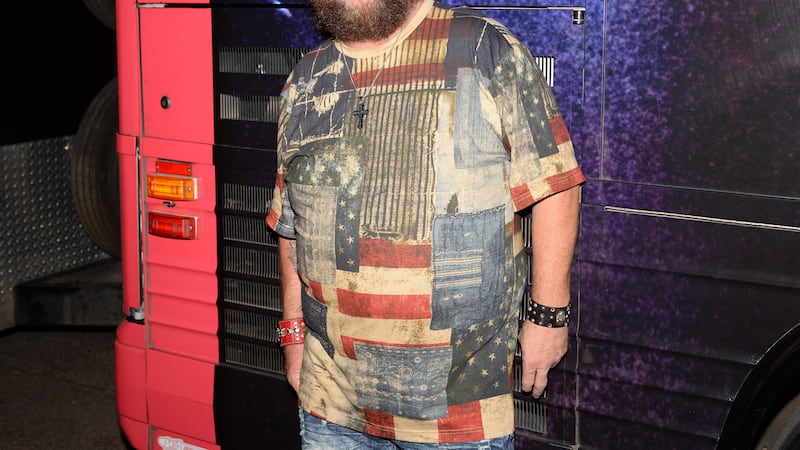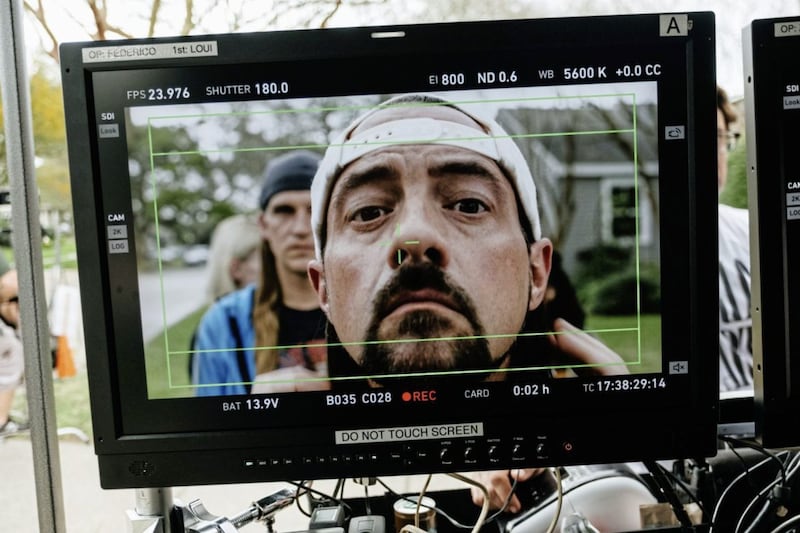THREE Irishmen, a Scotsman and an iguana walk on to a boat. Not to mention a dog called Bunion and a suffragette stowaway called Phoebe Sturgeon.
They then leave Dublin behind them – just before the Easter Rising takes place in 1916 – and set sail for an adventure to the Arctic to find the lost skeleton of an Irish giant, encountering German submarines and polar bears on their way.
It’s not a joke but the storyline in Kevin Smith’s entertaining second novel The Voyage of the Dolphin and – as with his 2012 Belfast-based debut Jammy Dodger – there’s a great deal of wit and absurdity in what is a well-researched piece of work.
While Smith knew 1980s Belfast well (he went to Queen’s and used to work for The Irish News), his first-hand knowledge of 1916 Dublin wasn’t quite as strong.
But he did take inspiration from his grandfather Walter Edwin Crozier, who was in Dublin at the time. The book is dedicated to Crozier and one of the main characters is named after him. Like the real man, the fictional Crozier was training to be a Presbyterian minister.
“My grandfather was a Co Monaghan man, born in 1893. So he was about 80 when I was very small, so my memories of him are faint,” says Smith, who has been living in Dublin with his wife and children for almost 20 years now.
“But he was at Trinity [College] when the Rising broke out. I was walking across the cobbled front square at Trinity one morning and I just had this weird sense that a century earlier my grandfather could have been walking across the very same cobbles.
“So I started to think about him and I was thinking, 'What would he have seen and felt during that tumultuous week?’”
He says his grandfather was a “meticulous diary-keeper” and you would have expected these diaries to be brilliant source material for the novel. Yet, as he explains, that avenue wasn’t open to him.
“When my grandfather died, my grandmother – for reasons known only to herself – destroyed the diaries. I remember him saying that during the Rising that he slept with a revolver under his pillow, which was a very glamorous image for a seven-year-old or whatever age I was.
“So there was this gap in my family history because the diaries weren’t available, but I had this fragment and that’s all I had to go on. Everyone else in Dublin has a 1916 story and I nearly had one,” he laughs.
Smith was born in London but grew up in Holywood, Co Down. He worked as a journalist for 20 years, spending some of that time in eastern Europe.
As the time frame for The Voyage of the Dolphin takes in the Rising, the First World War and explorer Ernest Shackleton’s Arctic adventures, Smith had to do a lot of research.
“When I started writing the book, I realised that I knew surprisingly little about 1916, virtually nothing about the Arctic Archipelago and absolutely nothing about sailing ships,” says the author.
In the novel, our expedition leader Hugh Fitzmaurice – a relative of Shackleton – finds out that he’s being kicked out of Trinity but is told he could help them out by assembling a group of men to sail to the Arctic on a research trip to find the skeleton of Irish giant Bernard McNeill, the last of the so-called Tyrone Giants, who stood 8ft 9ins tall.
“I needed a comic foil; a buffoon, so that’s where Fitzmaurice came from. And who better than a minor aristocrat? I just thought I’d take him away from the Rising and the war, then I had the explorer thing in my mind and I thought 'How do I get him to the Arctic?’ Then I dreamt up Crozier and Rafferty.
“I actually thought that the book maybe should have been published earlier because I had the fear that everyone would be at [1916] saturation point, but I think people might be glad of a little light relief.”
In the novel, Crozier drinks Bushmills whiskey, sings My Lagan Love and remembers picnics on the slopes of Cavehill in Belfast.
“I suppose the giants thing goes back to Cavehill and Jonathan Swift and holidays on the Antrim coast when I was a kid and being regaled with stories about the Giant’s Causeway,” says Smith.
He says it was important for him to have a prominent female character in the book – Phoebe.
“It would have been a very manly affair otherwise; women are a civilizing influence. The whole suffragette story is another element in the mix too,” he says.
And why did he decide to give the Scottish skipper the name Ewan McGregor?
“I knew he’d be called McGregor, so I just thought 'Why not Ewan?’ Then we can get Ewan McGregor to play him in the film version,” he laughs.
And the writer thinks the name of Fitzmaurice’s pet iguana goes back to his days as a journalist in Belfast.
“There used to be a Bridie who worked in the Irish News canteen,” he recalls. “She used to deep-fry everything.“
The Voyage of the Dolphin is out now, published by Sandstone Press (sandstonepress.com). Kevin Smith will have a Belfast launch on the evening of Thursday April 14. For venue information, check Twitter.com/jammyauthor








